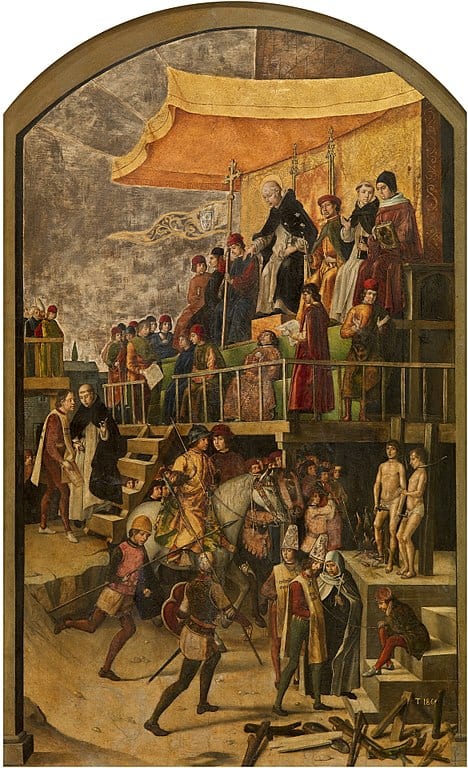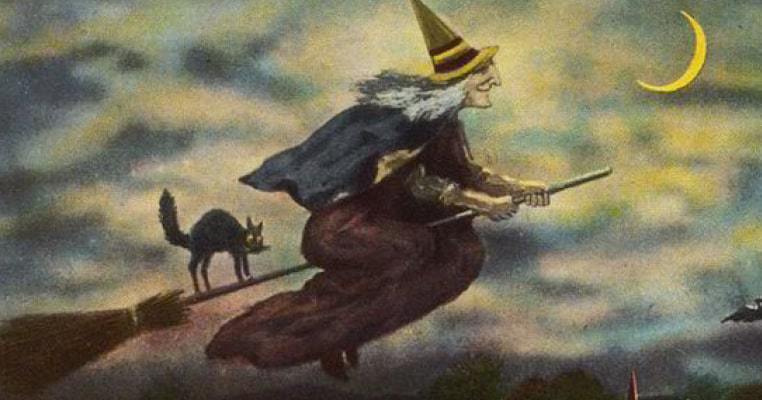On June 13, 1233, Pope Gregory IX instigated the first bull of his papacy: the Vox in Rama. The Bull arose in response to rumors of satanic cults in Germany by the area’s grand inquisitor, Conrad of Marburg. The Vox (or “Voice in Rama,” after the city of Ramah in ancient Judah) beseeched the archbishops Mainz and Hildesheim to lend their full support to Conrad in his efforts to root out the cult and its adherents. However, it was also a piece of papal legislation that was notable in another way, for the Vox was the first papal bull to associate the cat with witchcraft.
The Vox described the depraved rituals of the cult in detail, portraying the devil worshipped by the witches as a shadowy half cat and half man figure. Its long-term effect, however, was to reshape the view of the cat in European society in general, morphing it from a pagan sacred animal into an agent of hell. This demonization led to the widespread, violent persecution of black cats in particular. This persecution was so savage that some scholars believe that by the 1300’s, Europe’s cat numbers were sufficiently depleted to prevent them efficiently killing rats and mice- thus allowing the bubonic plague to spread.

The Rise of Heresy
On March 19, 1227, 80-year-old cardinal Ugolino di Segni became Pope Gregory IX. Gregory was a reluctant pontiff- and not just because of his age. For he had inherited the problem of heresies which were blossoming across thirteenth century Christian Europe and challenging the ‘universal’ church. These new, heretical beliefs varied. The Waldenses, who were founded in 1170 by Peter Waldo claimed that individuals could commune with God directly, negating the need for priests. Other sects, such as the Cathars or Albigensians had more esoteric beliefs. Both, however, rendered the Catholic Church redundant.
Such heresies could not be left unchecked to spread around the population and thus undermine the Church’s authority. So Gregory began to formalize and promote practices that formed the basis of the later medieval inquisition. Although he did not approve the use of torture in the interrogation of suspects, Gregory did pass the law that sent unrepentant heretics to the fire and in some cases repentant heretics to prison for life. He also became the first Pope to appoint inquisitors to actively root out such heretics.
One such individual was a German priest and nobleman, Conrad of Marburg. Conrad had initially been involved in the persecution of the Cathars and enjoyed significant successes during the Albigensian crusade of 1209 -1229. Conrad’s methods for identifying heretics were questionable to some. He tended to treat all those accused as guilty until proven innocent and threatened all those who would not confess with the flames. Those arrested by Conrad, therefore, had only two options: admit to heresy and spend the rest of their lives as a known former heretic or burn.

Conrad’s methods, however, yielded results and in 1231, the Archbishop’s of Trier and Mainz wrote to the Pope, full of praise for their heretic catcher. Gregory immediately recognizing Conrad as a useful tool in his war against religious dissent. On October 11, 1231, he appointed Conrad as the first grand inquisitor of Germany. The Pope also gave Conrad carte blanche to deal with all heretics as he saw fit- including permission to disregard usual church rules.
Since the ninth century AD, the Canon Episcopi of the Catholic Church had deemed belief in witchcraft to be a heresy in itself. Although witch trials did occur on a local scale, they were mainly for the practice of pre-Christian beliefs and tried in secular rather than ecclesiastical courts. All this was about to change. For Conrad in his quest for heretics around Mainz and Hildesheim claimed to have uncovered a Luciferian cult. He informed the Pope of his findings. Gregory believed him. After all, the devil was already at work through heretics. So why not witches? Gregory’s response was to issue the Vox in Rama.

